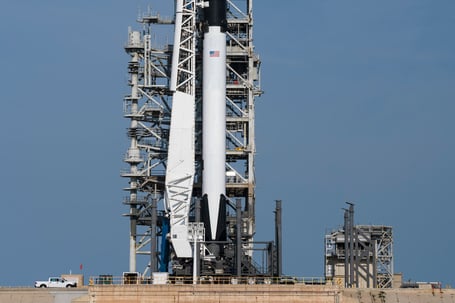Introduction:
-2.jpg?width=260&height=358&name=image%20(1)-2.jpg)
Ground support and testing are essential components of aerospace operations, both in general aviation and space exploration. These processes involve a range of equipment, systems, and procedures aimed at preparing vehicles for launch, conducting thorough tests, and maintaining their integrity throughout the entire mission. In this article, we will explore the significance of ground support and testing in aviation and space, highlighting their key functions, equipment involved, and the importance of safety measures.
Ground Support in Aviation:
In the context of general aviation, ground support refers to all the services and maintenance equipment required to support aircraft operations. It encompasses various activities, such as refueling, luggage and cargo handling, passenger transportation, catering, waste removal, deicing, and firefighting. Essentially, ground support includes everything except the aircraft itself. This infrastructure plays a critical role in ensuring smooth and efficient operations at airports worldwide.
Ground Support in Space Exploration:
In the realm of space exploration, ground support takes on a broader scope. It involves the equipment and functions necessary to ready a rocket for launch and ensure its safety. A rocket is not a single entity but an assembly of various components that must be integrated and thoroughly tested before liftoff. Ground support and testing activities are conducted in manufacturing clean rooms, assembly locations like the Vehicle Assembly Building (VAB) at NASA, and launchpads such as Cape Canaveral.

Key Equipment and Systems in Ground Support:
The ground support equipment utilized in aerospace operations encompasses a wide range of hydraulic, pneumatic, and gas-related systems. These systems employ tubing, fittings, valves, and various other components to facilitate functions such as fueling, fluid transfer, pressurization, and leak testing. Hydraulics and pneumatics are commonly employed in ground support, along with vacuum systems, inert gases (such as helium and nitrogen), and fuels.
Testing Procedures and Safety Measures:
One crucial aspect of ground support and testing is ensuring the reliability and safety of the vehicle. Extensive testing is conducted to verify that each component and fluid system works as intended and is free from leaks. Test technicians employ different techniques, including pressure testing, visual inspections, and the use of liquid or gas leak detectors. Helium leak detection is particularly effective in pinpointing potential leaks in joints and fittings. All these procedures are aimed at identifying and rectifying any issues before the launch or test.
Maintenance and Environmental Considerations:
Once the rocket has been launched or the test is completed, the ground support systems still contain residual fluids and gases. Proper procedures are followed to safely handle and dispose of these materials. Fluids are often returned to storage tanks, while gases are compressed and stored for future use. Environmental considerations play a vital role in ground support operations as well. For example, water used during testing must be treated and cleaned before being discharged to ensure minimal impact on the environment.
Collaboration and Industry Standards:
The aerospace industry relies on collaboration between various stakeholders, including aerospace companies, manufacturers, and suppliers of ground support equipment. Standardization of fittings, valves, and other components is crucial to ensure compatibility and efficiency across different systems. Companies like SSP partner with major aerospace entities, providing the necessary components to support the hydraulics, pneumatics, and fluid control systems in these critical operations. SSP’s KJ fittings conform to the NASA GP-425, KSC-STD-Z-0008, AS1098 standards ensuring safe connections.
Conclusion:
Ground support and testing are integral to both general aviation and space exploration. These processes involve a wide range of equipment and systems to ensure the safe and efficient preparation, launch, and testing of vehicles. By employing hydraulic, pneumatic, and gas-related systems, along with rigorous testing procedures, the aerospace industry can maintain the highest standards of safety and reliability. As we continue to explore new horizons, ground support will remain an essential component in the success of aviation and space missions.


